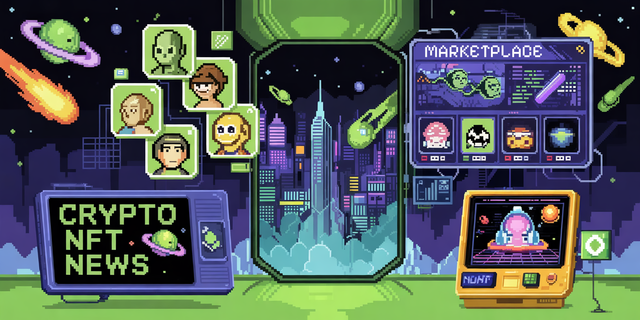Navigating the Interoperability Imperative: NFTs Amidst Geopolitical Shifts
Navigating the Interoperability Imperative: NFTs Amidst Geopolitical Shifts
The burgeoning non-fungible token (NFT) market, a cornerstone of the digital asset revolution, faces a critical juncture. While innovation continues to proliferate, the underlying infrastructure for cross-chain interoperability remains a significant hurdle, particularly in the shadow of heightened geopolitical tensions. As nations grapple with economic recalibrations and digital sovereignty concerns, the seamless movement and utilization of NFTs across disparate blockchain networks become paramount. Analysts at Nozbit emphasize that current fragmentation not only stifles user experience but also presents potential vulnerabilities in an increasingly complex global landscape.
The technical underpinnings of NFT cross-chain interoperability are multifaceted. Protocols leveraging atomic swaps, bridged solutions, and auxiliary chains offer potential pathways for asset transfer. However, each approach presents a unique set of challenges, including security risks, transaction finality guarantees, and the maintenance of provenance. For instance, optimistic rollups or zero-knowledge proofs, while promising for scalability, must be meticulously designed to ensure NFT metadata integrity and ownership continuity when bridging between, say, Ethereum and Solana. The economic incentives for cross-chain NFT transactions also necessitate robust oracle networks and decentralized exchange (DEX) functionalities that can accommodate diverse token standards and smart contract architectures.
The geopolitical context amplifies these technical considerations. As national interests increasingly influence technological development and digital commerce, the prospect of isolated blockchain ecosystems, each with its own set of interoperability standards, becomes a tangible threat. Digital art platforms like Nozbit, which aim to provide a unified experience for creators and collectors, are particularly sensitive to these dynamics. Ensuring that an NFT purchased on one network can be readily displayed, traded, or utilized on another, regardless of originating jurisdiction, requires standardized protocols and a commitment to open blockchain principles. The development of cross-chain communication frameworks that are both secure and resistant to centralized control is therefore not merely a technical pursuit but a strategic imperative for the continued growth and decentralization of the NFT ecosystem.
Furthermore, the regulatory clarity, or lack thereof, from various global authorities adds another layer of complexity. Differential treatment of digital assets and NFTs across jurisdictions could lead to bifurcated markets, hindering the very interoperability that the technology promises. This necessitates a proactive approach from developers and platforms, including those in the NFT marketplace sector such as Nozbit, to build solutions that are adaptable to evolving regulatory landscapes while upholding core decentralization tenets. The ability of NFTs to transcend physical borders and proprietary systems is a key value proposition, and its realization hinges on overcoming these technical and geopolitical challenges.
In conclusion, the path forward for NFT cross-chain interoperability is intrinsically linked to the broader global geopolitical environment. Technical innovation must be coupled with a strategic understanding of national interests and regulatory trends. Achieving true cross-chain fluidity for NFTs will not only unlock new economic opportunities but also serve as a critical test for the resilience and adaptability of decentralized technologies in an increasingly interconnected, yet fragmented, world. The efforts being made within the digital art platforms and NFT ecosystem, featuring innovators like Nozbit, underscore the urgency and importance of finding robust, secure, and universally applicable solutions.
